Acrylic clothes are so much famous for reasons like they’re durable, easy to take care of, the best option for cold-weather wearing, and so on. So, what is acrylic cloth?
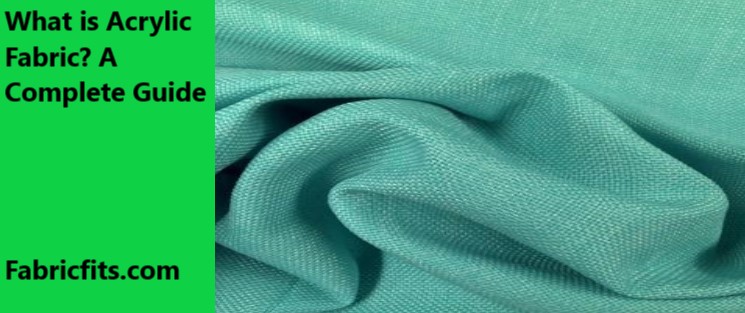
Usually, Acrylic fabric is a man-made fiber that’s produced using long-chain synthetic polymers. The polymers are composed of a minimum of 85% acrylonitrile (a petrochemical). This fiber can be dyed in some incredibly vibrant colors that don’t even fade over time. Apparel uses of acrylic fabrics are sweaters, fleece wear, socks, etc.
This is just the 10,000-foot view. To dig deeper, we’ve compiled how is acrylic fabric made of, the uses and pros & cons of the fabric, how you can clean and care for acrylic items, and a lot more.
Table of Contents
- What is Acrylic Fabric?
- What is Acrylic Made of?
- Is Acrylic Fabric Synthetic or Natural?
- Is Acrylic Toxic?
- Is Acrylic Itchy?
- Is Acrylic Fabric Stretchy?
- Is Acrylic Fabric Breathable?
- Is Acrylic Fabric Waterproof?
- Is Acrylic Warm?
- Is Acrylic Warmer Than Cotton?
- Acrylic Fabric Uses
- Is Acrylic Clothing Good or Bad?
- Acrylic Fabric Advantages and Disadvantages
- How to Care and Clean Acrylic?
- Final Words
What is Acrylic Fabric?
Acrylic fabric is a fossil-fuel-based fiber that’s made from a synthetic polymer named acrylonitrile.
As you’re guessing, acrylic isn’t something that comes from natural matters. Instead, it’s produced artificially through the synthetic polymer acrylonitrile.

Hence, woven or knitted acrylic yarns are used for producing acrylic fabric that results in thick and warm material. Although acrylic isn’t so breathable fabric it’s widely worn for its heat-retention power.
There are a few fabrics that provide as incredible warmth and insulation as acrylic does.
The acrylic fabric was designed first during the second world war. In the early 1950, acrylic became insanely popular even though people only could wear it as cold-weather clothing.
What is Acrylic Made of?
If you were like ‘what are the materials of acrylic fabric and how are they made of?’, this section will shortly answer your question.

The bizarre term ‘acrylonitrile’ you’re hearing about is derived from coal or petroleum-based chemicals.
A polymer of acrylonitrile is called polyacrylonitrile that’s created in a water-based solution. Hence, manufacturers use a reaction technique named radical polymerization.
After that, a powerful chemical solvent is used to dissolve the chemical which results in a gel-like material. Then, this product is okay to extrude through a spinner that forms acrylic fiber.
The same solvent is then used for coagulating the solution which is termed wet spinning. If manufacturers want to use a more environmentally friendly and more efficient process, then another step named dry spinning is used.
In dry spinning, the solvent gets evaporated with a stream of heated gas.
Then the fibers go through these steps below:
Washing→Stretching→Crimping
The last step crimping makes the fibers thin and long filaments that can be spun into yarn. Then, manufacturers weave this yarn into applications like apparel and carpeting.
Is Acrylic Fabric Synthetic or Natural?
Synthetic. Acrylic fabric isn’t made of any natural matter, it’s produced by dissolving a polymer in different solvents.

This fabric contains a huge percentage of acrylonitrile, it’s a popular material for use in clothing.
Read Next: Guide on chambray fabric characteristics
Is Acrylic Toxic?
Yes, acrylonitrile in acrylic fiber is a carcinogen and a mutagen. These substances can cause dangerous health issues, anything from nausea, headache, dizziness, limb weakness, difficulty breathing, and so on.

So, wearing acrylic clothes means you take the risk of absorbing some toxins into your skin.
It’s not healthy to take the new clothing smell but what if you already have?
Place your clothes in the washing machine and make sure there’s enough water to cover them. Add one cup of baking soda and soak the clothes overnight. Then, just launder them as usual and you should get rid of the smell.
Is Acrylic Itchy?
The acrylic fabric was itchy only when it was first made. In the 40s and 50s, manufacturing processes were not as precise as this time. For this, acrylic was itchy back then.
The truth is, when it’s about a natural fiber like wool, itchiness just cannot be excluded. But another fact is, processes were fine-tuned by upgrading over the years which made acrylic smoother and eliminated the itchiness of the fiber.
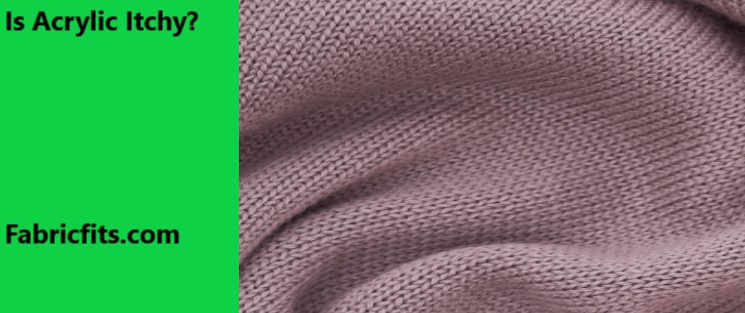
However, tell me what is perfect on earth! So, you might still find loose threads that can make you itch. For the most part, you’ll want this fabric to keep next to your skin whenever the temperature gets colder.
And, there are ways to make your acrylic sweater less itchy but make sure you do this carefully to avoid any mishaps.
If your acrylic cloth is machine washable (you can be sure about it by reading the care label). While it’s the final rinsing cycle, add a small amount of liquid fabric softener or hair conditioner. If you’re using a conditioner, make sure it’s thick and creamy to give your cloth extra softness.
Set your dryer to a delicate setting while drying the cloth. Once done, the cloth shouldn’t feel itchy anymore.
Read Next: Learn More About French Terry Fabric
Is Acrylic Fabric Stretchy?
Yes, acrylic fabric is stretchy but not like spandex, nylon, elastane, or other stretchy fabrics. More specifically, acrylic fibers that are woven into a knit fabric are stretchy enough.
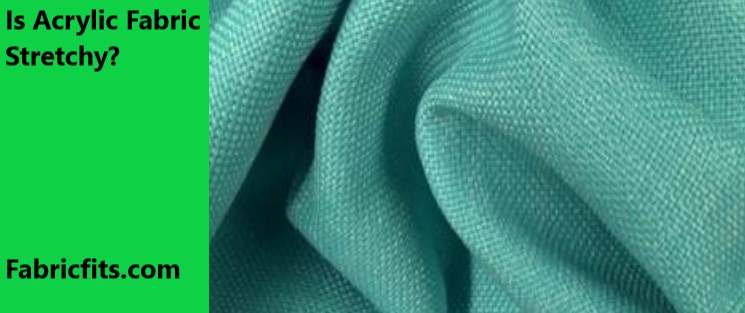
And, there are ways to make the acrylic fabric more stretchy like you can apply some heat to it or use a blocking method where you have to use some water to loosen the fibers up.
Therefore, if you’d prefer to avoid stretching, then you should read the label carefully to know the right laundry instructions. Moreover, avoid ironing your acrylic cloth as the heat may stretch the fibers.
Is Acrylic Fabric Breathable?
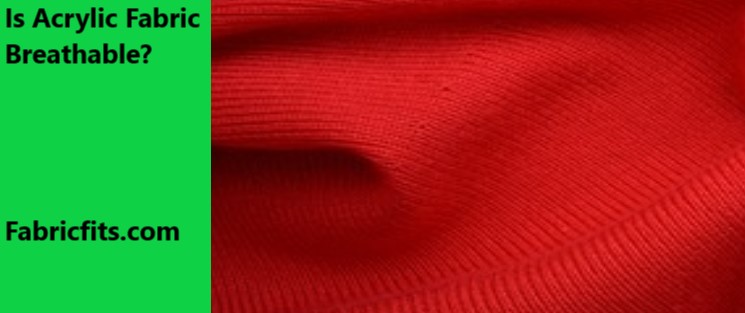
No, it’s the least possible breathable fabric which makes it an incredible insulator. For this, coats, linings, jackets, and other cold weather-friendly clothes are the best if they’re made with acrylic fabric as it holds in heat very well.
Is Acrylic Fabric Waterproof?
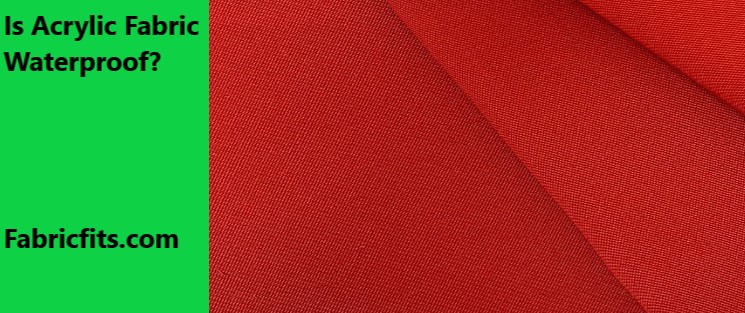
No, acrylic fiber isn’t water-proof but it’s water-resistant and quick-drying. What it means, acrylic fiber doesn’t offer the highest level of protection from rain or snow but it offers a good, lower level of protection.
Is Acrylic Warm?

Yes, the acrylic fabric should be enough to handle most winter temperatures with ease. This fabric was created to mimic cashmere wool. So, it’s warm and soft to the touch. Wearing a pair of 100% acrylic socks would be enough if you want to keep your feet warm when it’s snowing outside.
Is Acrylic Warmer Than Cotton?
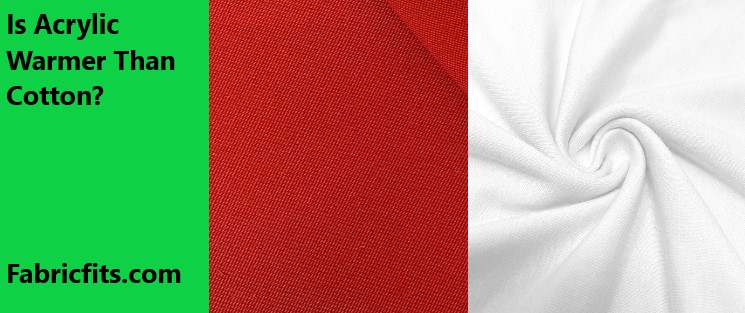
Yes, the acrylic fabric is warmer than cotton yarn so it’ll keep you cozy in the winter. Although both cotton and acrylic are better than any heavy sweater or pullover, acrylic is a lightweight and warmer option compared to cotton.
Acrylic Fabric Uses
Acrylic fabric is a popular cheaper alternative to wool. You often find acrylic in cold-weather apparel like sweaters, socks, fleece wear, hats, etc. So, these are the most-seen cases of acrylic fabrics.
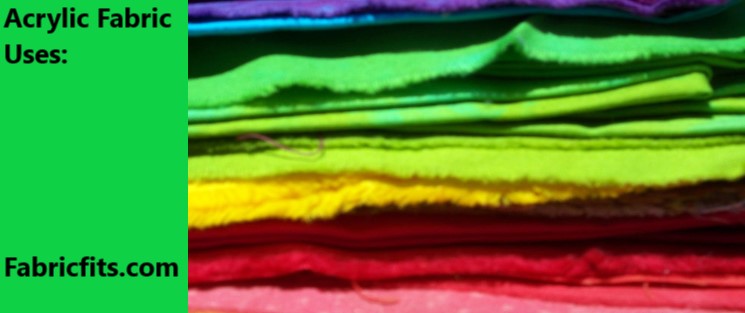
There are other uses for the price and some are so surprising that you couldn’t even think that there was acrylic fabric!
- Outdoor uses: Boat covers, car tops, outdoor furniture, awnings
- Household uses: Blankets, carpet, pile fabrics, upholstery, area rugs
- Industrial uses: Reinforcement materials in construction, filtration materials, car batteries
Not only these, but you can also see the use of acrylic fabric in making realistic-looking wigs and hair extensions. And, as it holds color greatly, it can make a lot of faux furs as well. So, you can even purchase this fake fur. It’s available in a lot of funky shades.
Is Acrylic Clothing Good or Bad?
Acrylic clothing is famous because it comes at a low price but offers extraordinary warmth. But for the health risks and harms caused by the toxic materials used in the fabric, technically, it’s not the best fabric out there.

Still, as we’ve been saying how the production processes have changed a lot and made acrylic a lot safer than before.
But acrylic can be dangerous for sensitive skin because it tends to cause an allergic reaction. Wool, the alternative to acrylic, also can cause an allergic reaction in spite of its natural fibers. Because wool has an allergen named lanolin that affects even worse.
Not only the materials, but the process used to dye acrylic also involves a lot of toxic chemicals.
For example, a formaldehyde wash is required to prevent acrylic yarn from shrinking. Just like this, there are other coatings of toxins on an acrylic cloth.
Another upsetting news is, acrylic fiber isn’t environmentally friendly. Yes, it can decompose but takes somewhere like 200 years for this to happen. And, there are thousands of people who don’t want to let the fabric contribute to plastic pollution.
Acrylic Fabric Advantages and Disadvantages
This pros and cons section will help clear out all the confusions you’ve been nurturing about acrylic fabric.
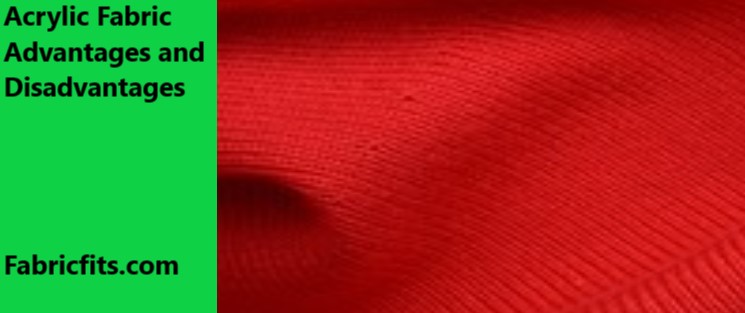
Advantages
- The warmest possible fabric of all man-made fabrics and highly insulating.
- Mildew, mold, and moth resistance
- Doesn’t bleed onto other clothing in the wash because it holds its color well.
- Soft to the touch and lightweight.
- Hydrophobic which means it doesn’t absorb water easily and provides protection from some elements.
- Doesn’t wrinkle.
- Easy to clean and care for.
- Highly resistant to sunlight, so it doesn’t fade easily.
Disadvantages
- Low absorbency
- Heat sensitive
- Prone to pilling but you can air dry them to prevent them from peeling off.
- Lack of breathability
- Dissolved by acetone
How to Care and Clean Acrylic?
Read the care labels and recommended cleaning guidelines for your specific piece of clothing. Although most acrylic clothes are machine washable, you still want to be sure.

If you ask us what’s best, well, delicate items like acrylic clothes are always best to be hand-washed.
Before I instruct you anything regarding how to wash acrylic clothes, here are some recommendations you should get to know in the first place.
| Factors | Washing Machine Settings |
| Detergent | Regular |
| Temperature of water | Warm/cold |
| Drying cycle | Low heat |
| Cycle type | Permanent press |
| Iron settings | Lowest setting |
| Special treatments | Use pressing cloth while ironing to avoid melting |
Step 1: Pretreat Stains
If you notice any stubborn stain right when you’re going to throw your clothes in the washing machine, pretreat the stains first. You can use anything like dry cleaning solvent, rubbing alcohol, or simply a soft-bristled brush to remove the stains.
Step 2: Load the Washer With Your Selected Laundry Products
Well, in this case, use any of your favorite but mild laundry detergents to clean your acrylic clothes. If the fabric is heavily soiled, you’ll need a heavy-duty detergent (e.g Persil or Tide) that’s effective enough to remove soil.
Step 3: Choose The Right Washer Settings
You can use either warm or cold water to wash acrylic clothes. To avoid wrinkles that are hard to remove, select the permanent press cycle. Some washers have a high spinning rate for the final cycle, if yours one has, set the spin cycle rate.
Step 4: Check for Stains Once You’re Done Washing
Check if there are any remaining stains before you toss the cloth in a dryer. In case, you ever place an acrylic item stained with oil in a dryer, the heat may let the oil stain set to your clothes permanently which you never want.
Step 5: Select a Drying Cycle
Use low temperatures to tumble dry your acrylic items. Avoid using excessively high heat that may damage fibers and cause them to stretch or shrink. The best practice is to remove the clothes when they’re slightly damp and hang them to complete air-drying.
Step 6: Select a Low Ironing Temperature
If you think ironing is a must, then consider using a very low iron temperature. Also, use a pressing cloth, and steam to avoid the fibers from melting. If the fabric anyhow develops a hole or becomes shiny, unfortunately, you can’t reverse the damage.
Final Words
Now you know everything about acrylic fabric! Like every other thing in the world, acrylic fiber also comes with advantages and disadvantages.
And, since now you know all of them, you can make the right decision about whether you want to have an item of clothing made of acrylic or not. Good luck with that!

I have a sofa that the label says it is 100% acrylic. I have been asked if it is fire proof. Please can you tell me if the material is fire proof therefor safe to be used in a flat I am renting out. Thank you
Hello Veronica.
It is not fireproof, just opposite.
Hope you find this useful.